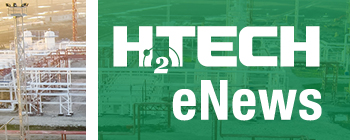News
First Public Hydrogen welcomes Rowland Water District, California (U.S.)
First Public Hydrogen (FPH2) welcomed Rowland Water District (RWD) as its first member, marking a key milestone in the development of the United States' first public H2 utility. The decisive move underscores RWD's commitment to sustainable operations and sets the pace for other local agencies pursuing innovative, zero-emission energy solutions.
Based in southeast Los Angeles County, Rowland Water District serves more than 55,000 residents across five cities and unincorporated communities. With a strong track record in balancing environmental stewardship with exceptional customer value, RWD continues to explore forward-thinking partnerships that benefit its ratepayers and the region.
"Joining First Public Hydrogen reflects our commitment to innovation and resource stewardship," said RWD General Manager Tom Coleman. "As a public agency, we have a responsibility to explore solutions that protect our environment while maintaining reliable service for our customers. This partnership allows us to play a meaningful role in shaping California's clean energy future—while continuing to put the needs of our community first."
"Rowland Water District's decision to join as our first member validates the vision behind First Public Hydrogen – a joint public utility built on accessibility, transparency and regional collaboration," said R. Rex Parris, First Public Hydrogen Chairman. "Their leadership demonstrates how public agencies can take bold, practical steps to accelerate H2 adoption and build a more sustainable energy future for California."
As a member of FPH2, RWD will gain access to shared procurement tools, technical expertise, and a transparent platform that connects public agencies with green H2 producers. The district will also help pilot early-stage H2 applications suited for public sector systems, from vehicle fleets to energy backup systems.
FPH2 encourages other public agencies to explore membership and join a growing network committed to accelerating California's clean H2 transition. With no cost, liability, or purchase obligation, the FPH2 model is designed to lower barriers for participation while offering access to infrastructure support, statewide collaborations, and future funding opportunities. As momentum builds, FPH2 continues to invite local governments, water agencies, transit systems, and public institutions to help shape a transparent, scalable H2 economy that benefits all Californians.

